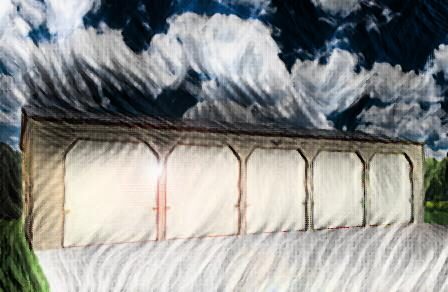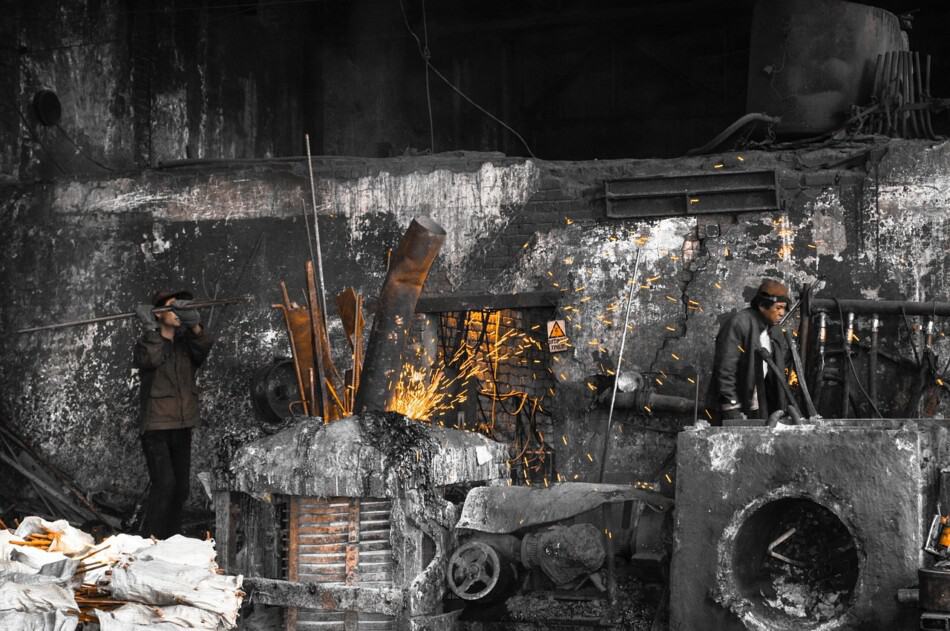Is A Metal Building Considered Non-Combustible?
Fire safety and building codes may have a significant impact on the budget and use of a structure. Therefore, it is important to understand the fire safety of a metal building. Is a metal building considered non-combustible?
A building built out of metal will not burn at the temperatures reached in most fires. Unlike wood-framed buildings, the structure also will not add fuel to a fire. It is therefore considered non-combustible by the International Building Code.
Just because a building is considered non-combustible does not mean it is immune to damage from a fire. Keep reading to get a better understanding of fire safety and what it means for a metal building to be considered non-combustible.

Why A Metal Building Is Considered Non-Combustible
The International Building Code defines a structure as non-combustible if it will not burn or add fuel to a fire when subjected to extreme heat. Since the components that make up a metal building will not burn or add fuel to a fire, metal buildings are considered non-combustible.
This does not mean that metal buildings are fireproof, though. Technically, no building is fireproof. Extreme heat may warp, melt, or compromise the structural integrity of a metal building and cause it to collapse or fail. However, since the building will not add fuel to a fire nor burn itself, it is considered non-combustible, which significantly improves fire resistance and fire safety.
The American Society for Testing and Materials (ASTM) tests various materials and assigns them different ratings based on how long they will typically last when exposed to intense heat such as a structure fire. Metal buildings typically contain components that rate very highly in the ASTM heat testing.
Fire Safe Versus Fireproof

As mentioned above, no building is fireproof. However, many factors go into determining the fire safety rating of a structure, not the least of which is the physical makeup of the components used to build the structure.
A fire-resistant structure is one that is likely to stand up to the intense heat of a dangerous fire. Since a structure may contain combustible materials such as drywall, carpet, or ceiling tiles, the fire resistance is not entirely dependent on the material used to frame the building. A metal building, however, is a great deal more fire-resistant than one made of wood.
The term fire-protected indicates the precautions that have been taken to mitigate loss from fire. On top of the non-combustible material that makes up a metal building, fire safety can also be improved by adding sprinkler systems, adequate evacuation routes, and distance from neighboring buildings.
Increased fire safety does not indicate a guarantee that fire will not damage or destroy a structure. It does, however, mean that the loss of life and property is greatly reduced.
Advantages of Non-Combustible Metal Buildings
There are several reasons why the fire safety of a metal building is preferable to one that is made from combustible materials such as wooden beams—keeping these advantages in mind may help when deciding what type of building to choose.
Some advantages of a non-combustible metal building include:
- Increased safety of people and property
- Lower insurance costs
- Decreased chance of spreading fires
- Code compliance advantages
Increased Safety of People and Property
Possibly the most important benefit to a metal building is the safety of the people and property found within. If a fire does occur within a metal building, the lives and property within the building will be much safer than if the building itself were prone to catching fire. Preventing needless death or injury is an important benefit to selecting a metal building.
Lower Insurance Costs
While an obvious benefit to a non-combustible building would be less likelihood of loss of life or property, a significant upside to a non-combustible metal building is much lower insurance costs. Insurance companies look favorably on buildings that can sustain extreme heat, lowering the cost that the property owner will pay to insure the building and the contents within.
Decreased Chance of Spreading Fires
In a building made of wood or other combustible materials, a fire can not only burn the building and consume the building as fuel, but the fire can also gain strength and jump to nearby structures. A fire in a metal building is much more likely to be contained before it can spread to nearby buildings. This is, again, good for insurance costs, but is also notably more likely to preserve the life and property of the neighbors.
Code Compliance Advantages
Building a structure using metal instead of wood improves the options in terms of code compliance. Many local code ordinances take into account the fire resistance of a structure when determining compliance. Erecting a metal building that is considered non-combustible may help to achieve compliance in the face of other mitigating factors such as distance to neighboring buildings or maximum occupancy.
Choosing a Non-Combustible Metal Building
There are many factors involved in choosing a metal building. Still, the fire safety of a non-combustible metal building is a powerful argument in favor of using a metal building.


